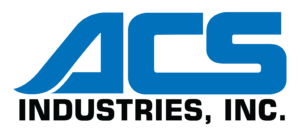ACS Industries is a world leading provider of knitted, woven and expanded metal mesh solutions and heat treating services, and can process our products using a variety of methods to improve performance and simplify our customers’ supply chains. Our experienced team provides sintering, brazing, annealing, and diffusion bonding of metals and alloys, including nickel, titanium, SnCuFe, SnCu, aluminum, copper, 300 stainless and 400 stainless steel.
Our experts are highly skilled and knowledgeable in all aspects of heat treating, using the latest technology and equipment, including reduced atmosphere or high vacuum furnaces, to ensure that your parts are processed to exact specifications. All wire pulled by ACS goes through a Meltec annealing furnace in order to achieve greater uniformity and strength.
We offer a wide range of heat treating services to meet the unique needs of our customers, from prototype to high-volume production. Contact us today to learn how our heat treating services, sintered wire mesh, woven wire mesh, and expanded metal offerings can benefit your project.
Sintering
Sintering is a process of fusing metal or ceramic powders together to form a solid object. This is done by heating the powder compacts to a temperature below the melting point of the material. The heat causes the particles to fuse together, resulting in a strong and dense object.
ACS can sinter a wide range of metals and alloys. We use state-of-the-art sintering furnaces to ensure that parts are sintered to the exact specifications.
Sintered wire mesh offers a number of benefits over other types of metal mesh, including:
- Increased strength and durability
- Improved corrosion resistance
- Reduced weight
- Increased flow rate
- Improved filtration efficiency
We can sinter wire mesh in a variety of shapes and sizes and can customize the sintered wire mesh to meet your unique requirements.
Brazing
Wire brazing joins two or more metal pieces together using a filler metal that has a lower melting point than the base metals. The filler metal is melted and flows between the base metals, forming a joint that is stronger than the base metals themselves.
We offer vacuum furnace brazing for metals. Among our heat treating services, wire brazing has many benefits over other joining methods, such as welding or soldering:
- Brazed joints are typically stronger than base metals being joined
- Brazed joints can withstand deformation without breaking
- Brazing is a relatively fast process, making it ideal for high volume production
- Can be used to create very precise joints, even with complex shapes
Annealing
Annealing heats a metal to a high temperature and then slowly cools it. This process relieves stress in the metal, helping to prevent cracking or breaking, and helps make the metal more pliable, making it easier to shape and work with. Annealing can also be used to refine the grain structure of metal, which can improve its strength and toughness.
This process is also critical in the manufacturing of many metal products, including automotive and aerospace parts, improving the properties that are essential for their performance and safety. Talk to our experts about our annealing heat treating services, including furnace annealing.
Diffusion Bonding
The process of joining two or more metal pieces together by heating them to a high temperature and applying pressure, diffusion bonding causes the atoms of the two metals to mix together, forming a strong and permanent bond. ACS has the expertise and capabilities to diffusion bond parts of any size or complexity.
Diffusion bonding offers several advantages, including strong and leak-tight joints, the ability to join dissimilar materials, minimal distortion, and a clean process.
With a proven track record of success in diffusion bonding metals and complex shapes, we maintain a rigorous quality control process to ensure that all diffusion bonded products meet the highest standards of quality.
Commonly Asked FAQs
1. What is the Difference Between Brazing and Sintering?
Sintering uses heat to bond particles together, while brazing uses heat and a filler metal to bond two pieces of metal together. Sintering is performed at a lower temperature than brazing and does not require a filler metal. As a leader in knitted wire mesh technologies and wire brazing and sintered wire mesh capabilities, our experienced engineers and customer support representatives can help you determine the right products and process solutions to meet your specific application needs.
2. What is the Difference Between Annealing and Sintering Wire Mesh?
Annealing and sintering are two different heat treatment processes that can be used to modify the properties of wire mesh. Annealing is used to make the mesh more pliable and easier to work with, while sintering is used to create a strong and rigid mesh with a uniform pore size.
3. Is Sintered Wire Mesh the Same as Diffusion Bonded Wire Mesh?
The two terms are often used interchangeably to describe a type of wire mesh that is created by fusing metal wires together using heat and pressure. Your industry may commonly use one term over another, but both are correct.
4. Which Process is Best for My Application?
The best process for your application will depend on several factors, such as the materials you are joining, the desired properties of the joint, and the production requirements. Our experts in heat treatment services are happy to speak with you about your specifications to help you make informed decisions that work best for your project.
Contact Our Heat Treating Services Team
Our team is available to answer your questions about brazed, annealed, diffusion bonded or sintered wire mesh and expanded metal mesh options and will help you find the right solution to meet your specifications. Reach out today and we look forward to speaking with you about your heat treating service needs.


